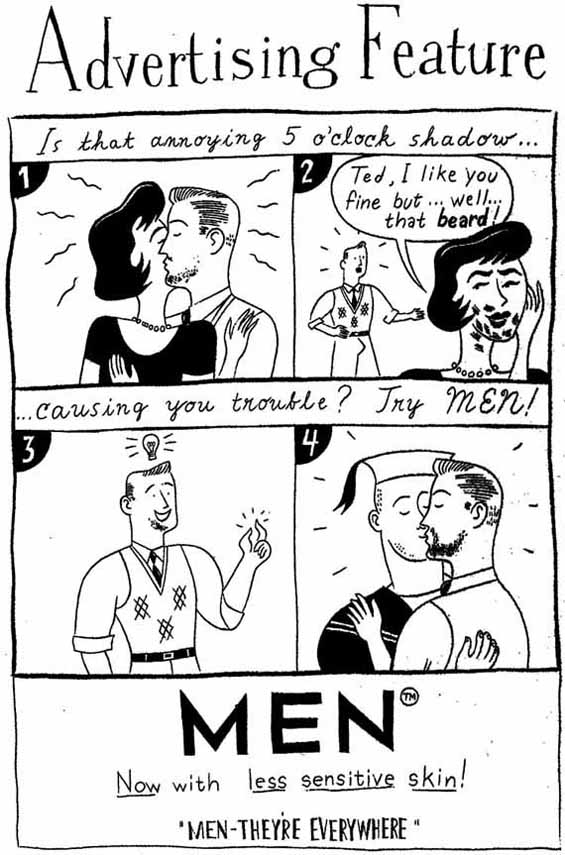 7. Antique Bakery Volume 1, by Fumi Yoshinaga. Published by Digital Manga Publishing, July 2005.
7. Antique Bakery Volume 1, by Fumi Yoshinaga. Published by Digital Manga Publishing, July 2005.
Much like Cardcaptor Sakura wasn’t the first shoujo title published in North America, nor the most popular, neither was Fumi Yoshinaga’s lovely, attractively-drawn episodic comedy/drama Antique Bakery the first yaoi title to make it to our shores or make it big. Actually, a very good case could be made by hardcore fans that, despite being created by an author known for her immensely popular yaoi titles and having come up through the doujinshi circuit and having gotten her start in yaoi, Yoshinaga’s Antique Bakery isn’t yaoi at all; just a male-centric shoujo romance story with a couple of gay characters. These people are, for my purposes, entirely wrong. Because however tightly you want to focus labels like yaoi, BL, ML, whatever, Antique Bakery was at the forefront of the then-exploding yaoi manga scene in 2005-2006, and Yoshinaga’s was the first book to cross over into mainstream comics and manga readership, and that makes it more notable and important than any series that could be considered a more authentic example of the genre. Antique Bakery made everyone sit up and take notice.
So lets get some terminology out of the way. I’m just going to copy the first couple of paragraphs of the definition from Wikipedia in here, because that way if anyone’s got a problem with the definition they can head over and edit it there, instead of bothering me about it:
Yaoi (????)[nb 1] (aka Boys’ Love) is a popular term for female-oriented fictional media that focus on homoerotic or homoromantic male relationships, usually created by female authors. Originally referring to a specific type of d?jinshi (self-published works) parody of mainstream anime and manga works, yaoi came to be used as a generic term for female-oriented manga, anime, dating sims, novels and d?jinshi featuring idealized homosexual male relationships. The main characters in yaoi usually conform to the formula of the seme (literally: attacker) who pursues the uke (literally: receiver).
In Japan, the term has largely been replaced by the rubric Boys’ Love (?????? B?izu Rabu?), which subsumes both parodies and original works, and commercial as well as d?jinshi works. Although the genre is called Boys’ Love (commonly abbreviated as “BL“), the males featured are pubescent or older. Works featuring prepubescent boys are labeled shotacon, and seen as a distinct genre. Yaoi (as it continues to be known among English-speaking fans) has spread beyond Japan: both translated and original yaoi is now available in many countries and languages.
Yaoi began in the d?jinshi markets of Japan in the late 1970s/early 1980s as an outgrowth of sh?nen-ai (????) (also known as “Juné” or “tanbi”), but whereas sh?nen-ai (both commercial and d?jinshi) were original works, yaoi were parodies of popular “straight” sh?nen anime and manga, such as Captain Tsubasa and Saint Seiya.
Excerpted from http://en.wikipedia.org/wiki/Yaoi
So there you go. Yaoi, “Boy’s Love” (or BL for short), or shonen-ai. It all means about the same thing these days.
You may notice a bit of a chip on my shoulder about the definitions of yaoi, BL, shonen-ai, and what is or isn’t a representative of these genres, and that’s because the fans of these works tend to be the most intense and zealous out of any subgroup of fandom that I’ve ever personally run across. Yaoi is explicitly a fan-created culture, coming up out of the amateur-comics networks and meetings in the 1980s and in a very male-dominated society, and producers and proponents of this genre had to fight very hard to get taken seriously and treated fairly. I respect that, it’s hard not to, but considering its 2010 and the battles of yaoi and BL have been fought and won, here’s hoping that all involved can let their hair down a little.
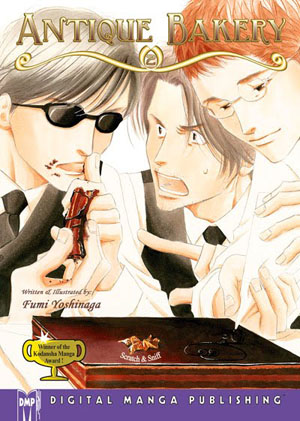 One of the earliest manga to be released in North America that featured overt themes of same-sex attraction between male characters was the afformentioned Cardcaptor Sakura. The series featured several characters of near-deity status, and regular humans spending time with these deities would feel strange around them, a “tickle in their stomach” that was never explicitly refered to as romantic affection, but through context it was clear that characters would be in the initial stages of falling in love, and that happened a few times between male characters. The attraction was explained away (and of course those sorts of scenes were cut entirely from the anime release) and was never explicit, but it was quite surprising for fans at the time and it die-hard fans were wondering, from the moment it was announced as being licensed for North America in manga and anime format, if the homosexual overtones would be kept in. Tokyopop did, mostly. Nelvana didn’t, at all.
One of the earliest manga to be released in North America that featured overt themes of same-sex attraction between male characters was the afformentioned Cardcaptor Sakura. The series featured several characters of near-deity status, and regular humans spending time with these deities would feel strange around them, a “tickle in their stomach” that was never explicitly refered to as romantic affection, but through context it was clear that characters would be in the initial stages of falling in love, and that happened a few times between male characters. The attraction was explained away (and of course those sorts of scenes were cut entirely from the anime release) and was never explicit, but it was quite surprising for fans at the time and it die-hard fans were wondering, from the moment it was announced as being licensed for North America in manga and anime format, if the homosexual overtones would be kept in. Tokyopop did, mostly. Nelvana didn’t, at all.
As near as I can tell, the first yaoi titles published in North America actually came courtesy of ComicsOne all the way back in 2000. As part of their massive launch of titles, ComicsOne broke ground by not only offering the first real yaoi/BL/shonen-ai titles in English, but also by offering digital downloads of their work in Adobe E-Book format. They did that for all of their print manga, and also produced numerous titles that were download-only, including the yaoi titles, Lucky Star by Shimoi Kouhara, and Horizon Line by Ikue Ishida [2]. Personally, as a gay guy down on the availability of gay or even gay-themed comics in North America, and having heard the occasional rumour about Japan’s plethora of “gay” comics, coming across these unpromoted, strange-format (e-book only) books on the ComicsOne website was a little like finding gold in them-thar hills. Explicit gay romance comics, where unlike the works available at the time with gay themes like Banana Fish or X/1999 from Viz, no one was the victim of terrible violence or child molestation! Win-win! Of course, not having a credit card (nor trusting ebooks, really) I never got to read those works. But knowing that they were out there was enough, for me, at the time.
According to an article published by Marc McClelland, yaoi started to be licensed and published in North America in 2003, but he doesn’t cite any publishers or titles. Off the top of my head, I’m going to go ahead and say Tokyopop’s Fake, a buddy-cop drama with a frustratingly vague gay edge was first out of the gate. A quick Amazon search shows 4 volumes of Fake published in 2003, with the first out in May. Tokyopop would later release the other mega-popular fan-demanded yaoi hit Gravitation in August of that year, and between those two series would rule-the-roost, until 2004 when DMP would begin releasing their Yaoi Books line with Desire, Selfish Love, and my favourite Only The Ring Finger Knows, and CPM/BeBeautiful would explore the darker, S/M side of yaoi and BL releases with Golden Cain and Kizuna. From there, it was just a hop, skip, and a jump to Tokyopop’s dedicated yaoi line Blu, DMP’s dedicated “mature” line 801 and a rebranding of their titles to more closely associate themselves with the Japanese publishers, with the line switching from “Yaoi Manga” to “June Manga” (after the famous Japanese BL anthology). The success of yaoi in the marketplace, an honest-to-goodness phenomenon in a decade full of them (GAY PORN COMICS FOR WOMEN!) inspired a huge rush of publishers eager to make some money in this new market. Best of all, most Japanese yaoi publishers were smaller organizations, and much more independent, so while you could have industry leaders like Libre (who licensed to CPM) or June (who licensed to DMP), fledgling English-language manga publishers like DramaQueen, the Boysenberry Books arm of Broccoli Books, or the yaoi-arm of an established publisher like Media Blasters could still find great licenses to release. And that’s before you even scratched the surface of doujinshi.
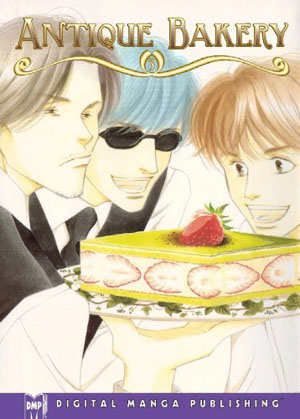 By the time Antique Bakery was published by mid 2005, there were likely about 100 yaoi releases already. By the time Antique Bakery finished its 4-volume run in 2006, there were more than 200. That release schedule ballooned to, at it’s height, more than 20 yaoi releases in a month, every month. That segment of the industry was growing by leaps and bounds, and I’m gonna be honest, as alien as manga in general and the Toykopop revolution in particular may have seemed to most retailers, it didn’t have a patch on how out there even the idea of yaoi seemed, let alone the contents which were often out-and-out pornographic. (As an interesting side-note, there’s never been a controversy or freak-out over the contents of yaoi titles, despite some pretty explicit and questionable publications… I honestly expected one to come up by now.) But the most important thing was, yaoi sold. It sold like gangbusters. But with so much of it coming out, and so many of the series only a volume or two long (with almost no-effort on the part of the publishers to build a following for individual authors), most retailers, even bookstore buyers, had no idea how to buy the stuff past “give me everything” and putting it out on the shelves. Much like the first part of the manga boom though, that strategy only works when “everything” isn’t dozens and dozens of new titles each month.
By the time Antique Bakery was published by mid 2005, there were likely about 100 yaoi releases already. By the time Antique Bakery finished its 4-volume run in 2006, there were more than 200. That release schedule ballooned to, at it’s height, more than 20 yaoi releases in a month, every month. That segment of the industry was growing by leaps and bounds, and I’m gonna be honest, as alien as manga in general and the Toykopop revolution in particular may have seemed to most retailers, it didn’t have a patch on how out there even the idea of yaoi seemed, let alone the contents which were often out-and-out pornographic. (As an interesting side-note, there’s never been a controversy or freak-out over the contents of yaoi titles, despite some pretty explicit and questionable publications… I honestly expected one to come up by now.) But the most important thing was, yaoi sold. It sold like gangbusters. But with so much of it coming out, and so many of the series only a volume or two long (with almost no-effort on the part of the publishers to build a following for individual authors), most retailers, even bookstore buyers, had no idea how to buy the stuff past “give me everything” and putting it out on the shelves. Much like the first part of the manga boom though, that strategy only works when “everything” isn’t dozens and dozens of new titles each month.
What makes Antique Bakery important is that it’s a gateway book, and one that broke out of and above the crowd. It’s a gateway into yaoi, sure, but also into shoujo manga, and into manga in general. It’s about food and it’s about love, two very universal subjects that can hook even the most reluctant or unlikely of readers, and it did. It’s also a book that ended up, and I can’t figure out how, with the author at the forefront of the promotion. It may be that “Fumi Yoshinaga” is an easier name for North Americans to parse and remember, or it might’ve been the fan community that, through illicit scans and distribution, knew that Yoshinaga had a huge body of work and big career ahead of her, of which Antique Bakery was only the beginning. Or it might just be that it’s a great series, and her name is worth remembering for that alone. At any rate, when Antique Bakery was solicited somehow I’d been made aware that the author was Kind Of A Big Deal, and it seemed like DMP was doing a lot to push the series. For example, it was the first comic book since Ren & Stimpy #1 more than 10 years earlier, to feature a scratch-and-sniff cover. Each volume would have a new scratch-and-sniff, strawberries, chocolate, all meant to entice you into the baking world within. No manga publisher had done something that clever, to that point. It was pretty cool, and got people talking.
It occurs to me I haven’t described the series in much detail. Simply, it’s about a bakery run by an attractive, scruffy jerk who knows everything about pastries and cakes, and owns a bakery. The lead chef has been in love with him for 15 years, but the owner brutally turned him down. Throw in a reformed street-tough learning about baking, and a clumsy childhood bodyguard trained to become a waiter, and you’ve got a series of highly episodic chapters that extole the virtues of love, friendship, and delicious food. It’s light material (until the surprisingly intense final volume), a comedy-of-errors with romantic tension (gay and straight), shocking twists, and page after page of delicious-sounding and gorgeously drawn cakes and pastries. In short, it’s a fluffy, guiltly-pleasure of a book, incredibly easy and comforting to read, with genuinely deep characters and relationships. It’s like a network dramedy, crossed with a Food-Network special. It’s fun stuff.
 From its description I can imagine many of you who haven’t read it (or any yaoi/BL/shoujo for that matter) couldn’t imagine how this could be good, or important. Well the pedigree of the book might convince you. The series won the 2002 Kodansha Manga Award for shoujo manga upon its original release, and the English edition of Antique Bakery was nominated for a 2007 Eisner Award for “Best U.S. Edition of International Material – Japan,” the award’s inaugural year. This book connected with people, and as the Eisner nom evidences, not just the small, vocal yaoi fanbase. It’s a highly-crafted work that received tons of reviews and great word-of-mouth attention online and in the fan press. The last three volumes of the series were short-listed for the inaugural 2007 list of Great Graphic Novels For Teens, put together by the Young-Adult Library Services Association (YALSA). The books received multiple printings, though unfortunately later editions were no longer Scratch ‘n’ Sniff. Almost from the month it was released, Antique Bakery became the poster-book for the Yaoi boom in bookstores and forward-looking comic shops across North America. It was a book you could hold up and say “This is yaoi! And it’s GREAT!” and not have anyone who flipped through it after you said that call you a liar and/or blush. Sure, in the end it might not be 100% accurate, it might not fall under the very stringent ‘rules’ of what constitutes a ‘yaoi’ or ‘BL’ title, but it acted as many readers’ first exposure to the genre, it got wide acclaim, and its really really good. It’s important to have gateway books, particularly for audiences that had been completely ignored by comic publishing for more than 30 years–women and gay men. I know more than a couple of each who hold Antique Bakery amongst the favourite comics of all time, and in the big picture I think that’s a lot more important than labels.
From its description I can imagine many of you who haven’t read it (or any yaoi/BL/shoujo for that matter) couldn’t imagine how this could be good, or important. Well the pedigree of the book might convince you. The series won the 2002 Kodansha Manga Award for shoujo manga upon its original release, and the English edition of Antique Bakery was nominated for a 2007 Eisner Award for “Best U.S. Edition of International Material – Japan,” the award’s inaugural year. This book connected with people, and as the Eisner nom evidences, not just the small, vocal yaoi fanbase. It’s a highly-crafted work that received tons of reviews and great word-of-mouth attention online and in the fan press. The last three volumes of the series were short-listed for the inaugural 2007 list of Great Graphic Novels For Teens, put together by the Young-Adult Library Services Association (YALSA). The books received multiple printings, though unfortunately later editions were no longer Scratch ‘n’ Sniff. Almost from the month it was released, Antique Bakery became the poster-book for the Yaoi boom in bookstores and forward-looking comic shops across North America. It was a book you could hold up and say “This is yaoi! And it’s GREAT!” and not have anyone who flipped through it after you said that call you a liar and/or blush. Sure, in the end it might not be 100% accurate, it might not fall under the very stringent ‘rules’ of what constitutes a ‘yaoi’ or ‘BL’ title, but it acted as many readers’ first exposure to the genre, it got wide acclaim, and its really really good. It’s important to have gateway books, particularly for audiences that had been completely ignored by comic publishing for more than 30 years–women and gay men. I know more than a couple of each who hold Antique Bakery amongst the favourite comics of all time, and in the big picture I think that’s a lot more important than labels.
Since Antique Bakery, DMP have published a number of additional books by Yoshinaga including Solfege, Ichigenme… The First Class Is Civil Law Volume 1 & 2, Garden Dreams, Flower of Life Volumes 1, 2, 3, & 4, The Moon and Sandals Volume 1 & 2, and Don’t Say Anymore Darling, with All My Darling Daughters scheduled to arrive in 2010 Edit: AMDD will be coming from Viz, not DMP. Tokyopop added Yoshinaga to their roster via their BLU yaoi line, with her series Gerard and Jacques Volumes 1 & 2 and the short story collections Truly Kindly and Lovers in the Night. Yoshinaga’s highest-profile release in North America came late in 2009, with the release of Ooku: The Inner Chambers Volumes 1 & 2 published by Viz. Ooku is an alternate-history series about early Japan, where women become the ruling class after a plague wipes out most men. The series is Yoshinaga’s most popular and best-received to date, winning numerous prizes including the Tezuka Osamu Cultural Prize for manga, 2007, shared with Yoshihiro Tatsumi’s A Drifting Life. FWIW my favourite of Yoshinaga’s works so far is Ichigenme…, a sexy series that really rings true as both a yaoi series and contemporary gay fiction. It’s filthy, too.
Images Top-to-Bottom: Antique Bakery Volumes 1-4, by Fumi Yoshinaga, published by Digital Manga Publishing.
-o+O+o-
– Chris
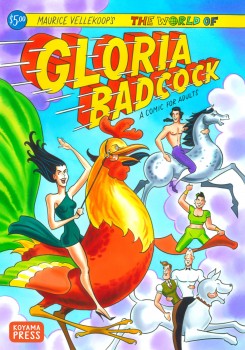
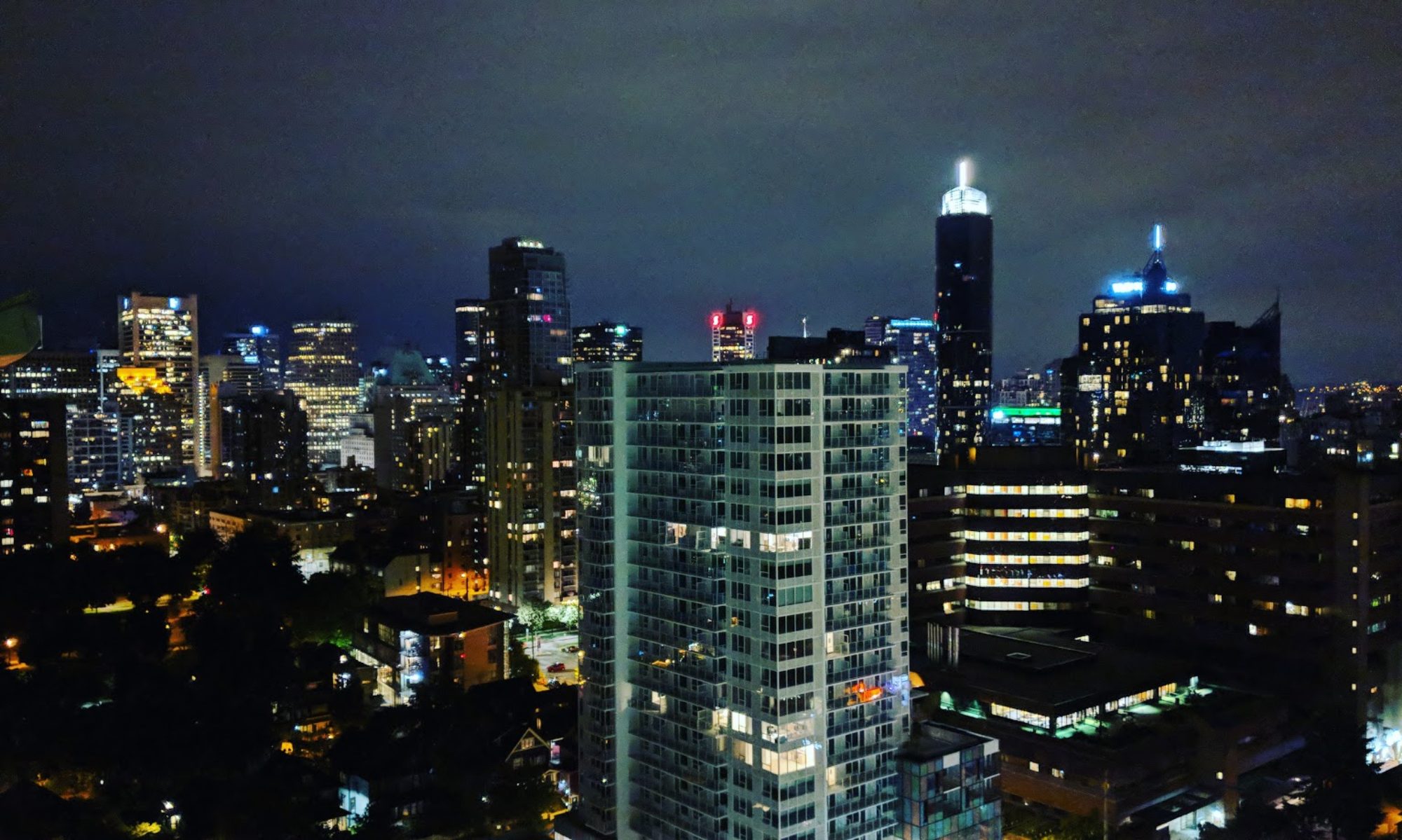







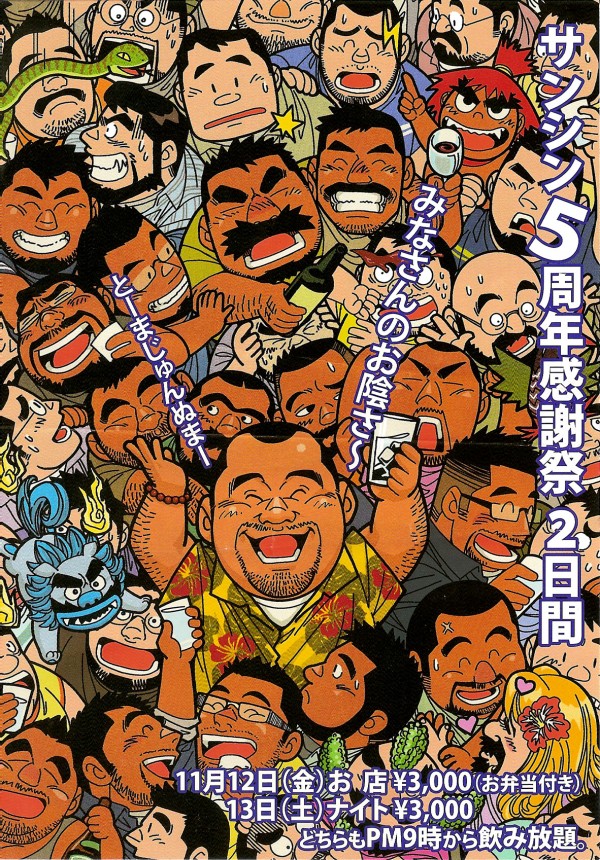


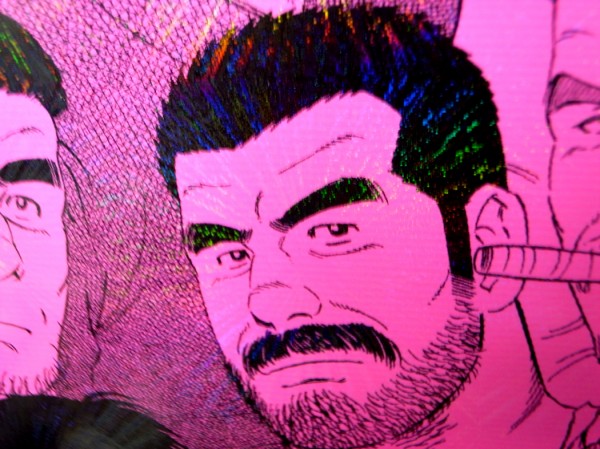




 7. Antique Bakery Volume 1, by Fumi Yoshinaga. Published by Digital Manga Publishing, July 2005.
7. Antique Bakery Volume 1, by Fumi Yoshinaga. Published by Digital Manga Publishing, July 2005. One of the earliest manga to be released in North America that featured overt themes of same-sex attraction between male characters was the afformentioned Cardcaptor Sakura. The series featured several characters of near-deity status, and regular humans spending time with these deities would feel strange around them, a “tickle in their stomach” that was never explicitly refered to as romantic affection, but through context it was clear that characters would be in the initial stages of falling in love, and that happened a few times between male characters. The attraction was explained away (and of course those sorts of scenes were cut entirely from the anime release) and was never explicit, but it was quite surprising for fans at the time and it die-hard fans were wondering, from the moment it was announced as being licensed for North America in manga and anime format, if the homosexual overtones would be kept in. Tokyopop did, mostly. Nelvana didn’t, at all.
One of the earliest manga to be released in North America that featured overt themes of same-sex attraction between male characters was the afformentioned Cardcaptor Sakura. The series featured several characters of near-deity status, and regular humans spending time with these deities would feel strange around them, a “tickle in their stomach” that was never explicitly refered to as romantic affection, but through context it was clear that characters would be in the initial stages of falling in love, and that happened a few times between male characters. The attraction was explained away (and of course those sorts of scenes were cut entirely from the anime release) and was never explicit, but it was quite surprising for fans at the time and it die-hard fans were wondering, from the moment it was announced as being licensed for North America in manga and anime format, if the homosexual overtones would be kept in. Tokyopop did, mostly. Nelvana didn’t, at all. By the time Antique Bakery was published by mid 2005, there were likely about 100 yaoi releases already. By the time Antique Bakery finished its 4-volume run in 2006, there were more than 200. That release schedule ballooned to, at it’s height, more than 20 yaoi releases in a month, every month. That segment of the industry was growing by leaps and bounds, and I’m gonna be honest, as alien as manga in general and the Toykopop revolution in particular may have seemed to most retailers, it didn’t have a patch on how out there even the idea of yaoi seemed, let alone the contents which were often out-and-out pornographic. (As an interesting side-note, there’s never been a controversy or freak-out over the contents of yaoi titles, despite some pretty explicit and questionable publications… I honestly expected one to come up by now.) But the most important thing was, yaoi sold. It sold like gangbusters. But with so much of it coming out, and so many of the series only a volume or two long (with almost no-effort on the part of the publishers to build a following for individual authors), most retailers, even bookstore buyers, had no idea how to buy the stuff past “give me everything” and putting it out on the shelves. Much like the first part of the manga boom though, that strategy only works when “everything” isn’t dozens and dozens of new titles each month.
By the time Antique Bakery was published by mid 2005, there were likely about 100 yaoi releases already. By the time Antique Bakery finished its 4-volume run in 2006, there were more than 200. That release schedule ballooned to, at it’s height, more than 20 yaoi releases in a month, every month. That segment of the industry was growing by leaps and bounds, and I’m gonna be honest, as alien as manga in general and the Toykopop revolution in particular may have seemed to most retailers, it didn’t have a patch on how out there even the idea of yaoi seemed, let alone the contents which were often out-and-out pornographic. (As an interesting side-note, there’s never been a controversy or freak-out over the contents of yaoi titles, despite some pretty explicit and questionable publications… I honestly expected one to come up by now.) But the most important thing was, yaoi sold. It sold like gangbusters. But with so much of it coming out, and so many of the series only a volume or two long (with almost no-effort on the part of the publishers to build a following for individual authors), most retailers, even bookstore buyers, had no idea how to buy the stuff past “give me everything” and putting it out on the shelves. Much like the first part of the manga boom though, that strategy only works when “everything” isn’t dozens and dozens of new titles each month. From its description I can imagine many of you who haven’t read it (or any yaoi/BL/shoujo for that matter) couldn’t imagine how this could be good, or important. Well the pedigree of the book might convince you. The series won the 2002 Kodansha Manga Award for shoujo manga upon its original release, and the English edition of Antique Bakery was nominated for a 2007 Eisner Award for “Best U.S. Edition of International Material – Japan,” the award’s inaugural year. This book connected with people, and as the Eisner nom evidences, not just the small, vocal yaoi fanbase. It’s a highly-crafted work that received tons of reviews and great word-of-mouth attention online and in the fan press. The last three volumes of the series were short-listed for the inaugural 2007 list of Great Graphic Novels For Teens, put together by the Young-Adult Library Services Association (YALSA). The books received multiple printings, though unfortunately later editions were no longer Scratch ‘n’ Sniff. Almost from the month it was released, Antique Bakery became the poster-book for the Yaoi boom in bookstores and forward-looking comic shops across North America. It was a book you could hold up and say “This is yaoi! And it’s GREAT!” and not have anyone who flipped through it after you said that call you a liar and/or blush. Sure, in the end it might not be 100% accurate, it might not fall under the very stringent ‘rules’ of what constitutes a ‘yaoi’ or ‘BL’ title, but it acted as many readers’ first exposure to the genre, it got wide acclaim, and its really really good. It’s important to have gateway books, particularly for audiences that had been completely ignored by comic publishing for more than 30 years–women and gay men. I know more than a couple of each who hold Antique Bakery amongst the favourite comics of all time, and in the big picture I think that’s a lot more important than labels.
From its description I can imagine many of you who haven’t read it (or any yaoi/BL/shoujo for that matter) couldn’t imagine how this could be good, or important. Well the pedigree of the book might convince you. The series won the 2002 Kodansha Manga Award for shoujo manga upon its original release, and the English edition of Antique Bakery was nominated for a 2007 Eisner Award for “Best U.S. Edition of International Material – Japan,” the award’s inaugural year. This book connected with people, and as the Eisner nom evidences, not just the small, vocal yaoi fanbase. It’s a highly-crafted work that received tons of reviews and great word-of-mouth attention online and in the fan press. The last three volumes of the series were short-listed for the inaugural 2007 list of Great Graphic Novels For Teens, put together by the Young-Adult Library Services Association (YALSA). The books received multiple printings, though unfortunately later editions were no longer Scratch ‘n’ Sniff. Almost from the month it was released, Antique Bakery became the poster-book for the Yaoi boom in bookstores and forward-looking comic shops across North America. It was a book you could hold up and say “This is yaoi! And it’s GREAT!” and not have anyone who flipped through it after you said that call you a liar and/or blush. Sure, in the end it might not be 100% accurate, it might not fall under the very stringent ‘rules’ of what constitutes a ‘yaoi’ or ‘BL’ title, but it acted as many readers’ first exposure to the genre, it got wide acclaim, and its really really good. It’s important to have gateway books, particularly for audiences that had been completely ignored by comic publishing for more than 30 years–women and gay men. I know more than a couple of each who hold Antique Bakery amongst the favourite comics of all time, and in the big picture I think that’s a lot more important than labels.